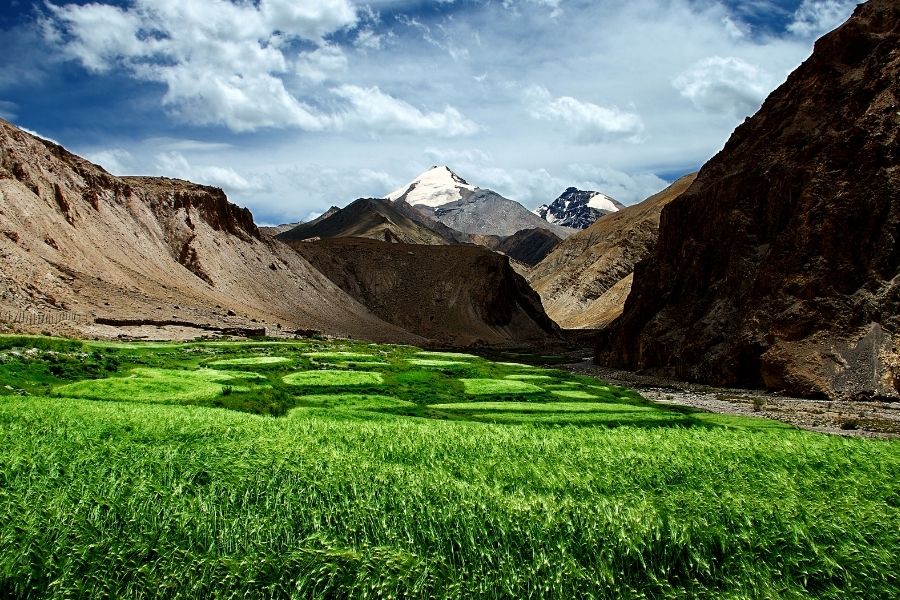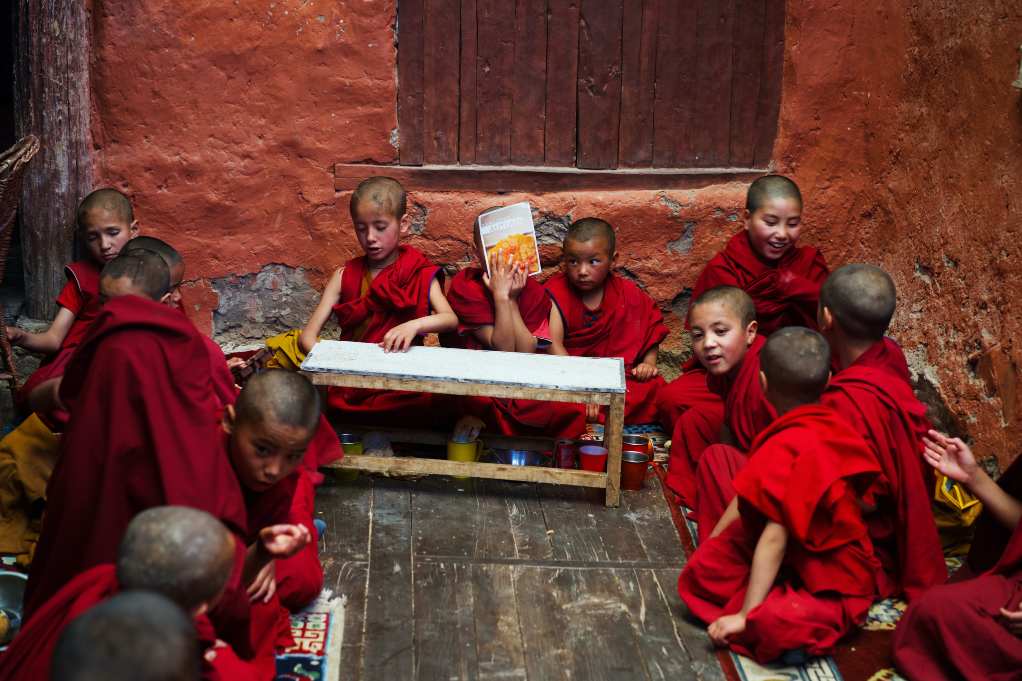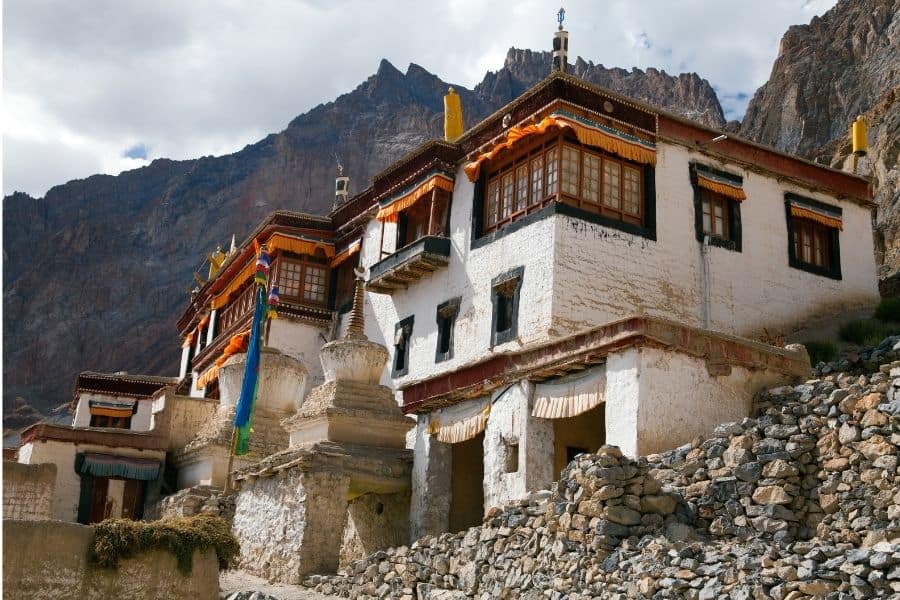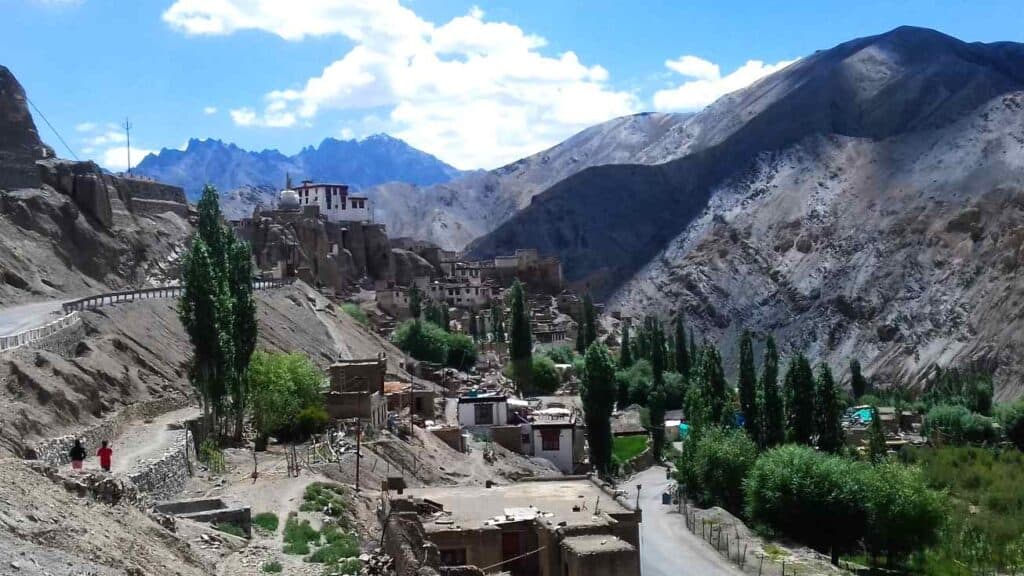Ladakh-Kashmir Budget Group Tour
A comprehensive tour in Ladakh, including Zanskar, the Nubra Valley, crossing one of the most breathtaking roads through Zoji La on the way to Srinagar. An immersive cultural trip with a taste of hiking in one of the most beautiful regions in the world, combined with homestays, will definitely be a lifetime experience!
Date of tour: 27.06 – 10.07.2024 (Leh-Delhi – 14 days)
Foreign tour guide: Agnes Simigh (the writer of this blog)
Cost of the tour: 1570 EUR+ flight tickets
Group size: min. 10 – max. 16
Surprisingly, the stunning barren countryside of Ladakh at the foothills of the Himalayas, without the tourist crowds and pushy sellers where the most authentic form of Tibetan Buddhism is practiced in the monasteries nestled in the mountains, is also India! The limited access to the Internet, hot water, and the bad quality roads once you leave the main road only reinforces the feeling that this seems to be the end of the world. In Ladakh, you can completely absorb the beauty and serenity of 5-6000-meter mountains and the meandering Indus or Zanskar rivers. All this while you are constantly at an altitude above 3,000 meters. After visiting one of the most beautiful landscapes on earth, you end up in Kashmir, whose greenery completely contrasts with what you experienced in Ladakh.
You will get the payment and all other information after having signed up for the tour.
Short itinerary
Day 1 (27th June): Arrival in Leh (Shanti stupa, Leh Palace)
Day 2 (28th June): Indus Valley sightseeing (Shey, Hemis, Chemrey, Thiksey)
Day 3 (29th June): Nubra valley
Day 4 (30th June): Pangong Lake
Day 5 (1st July): Back to Leh through Changla Pass
Day 6 (2nd July): Alchi, Rizong
Day 7 (3rd July): Lamayuru, Zanskar
Day 8 (4th July): Zangla
Day 9 (5th July): Pukhtal monastery (hiking)
Day 10 (6th July): Rangdum
Day 11 (7th July): Kargil
Day 12 (8th July): Drive to Srinagar through Zoji La
Day 13 (9th July): Srinagar
Day 14 (10th July): Delhi
We reserve the right to change the program!
For more inspiration, listen to the Amateur Traveler’s podcast’s episode about Ladakh, where I was a guest.
Detailed Itinerary
Day 1 (27th June): Arrival in Leh
There is a morning flight at 7 am from Delhi to Leh, so it is best to take a flight right away to Leh upon arrival in India.
After arriving at Leh airport, we will head directly to the hotel a few kilometers away. The first day is quite relaxing since it is essential to rest and acclimatize. (Leh and the whole of Ladakh are located at approximately 3500 meters).
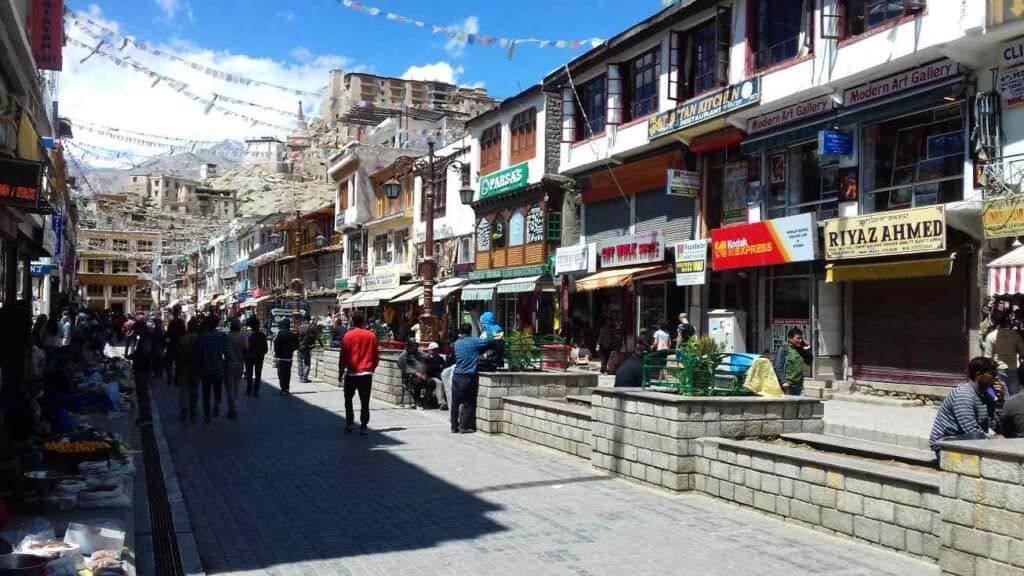
Later in the day, we visit the Leh Palace, the former royal palace of the Ladakhi kings. It is a massive fortress-like palace with wooden balconies, where you can still spot some original paintings and carvings. We head to the white-domed Buddhist Shanti Stupa to enjoy an amazing sunset over Leh. It is one of several Peace Pagodas that were built to keep the 2500-year-old Buddhist culture alive. This one was inaugurated in August 1991 by the current 14th Dalai Lama, Tenzin Gyatso. The view of Leh and the entire valley from the stupa is extraordinary.
Overnight in Leh
Day 2 (28th June): Indus Valley sightseeing
We discover some beautiful monasteries of the Indus Valley on a day trip from Leh:
Shey, once the capital of Ladakh; Hemis monastery, the most famous and largest monastery in Ladakh; Chemrey monastery, one of the most attractive monasteries located on top of an impressive hill, and Thiksey monastery, which resembles the Potala Palace in Tibet. The prayer halls are on the top of the mountain, while the white houses clinging against the steep-sided hill on 12 levels are where the approximately 100 monks live.
Overnight in Leh
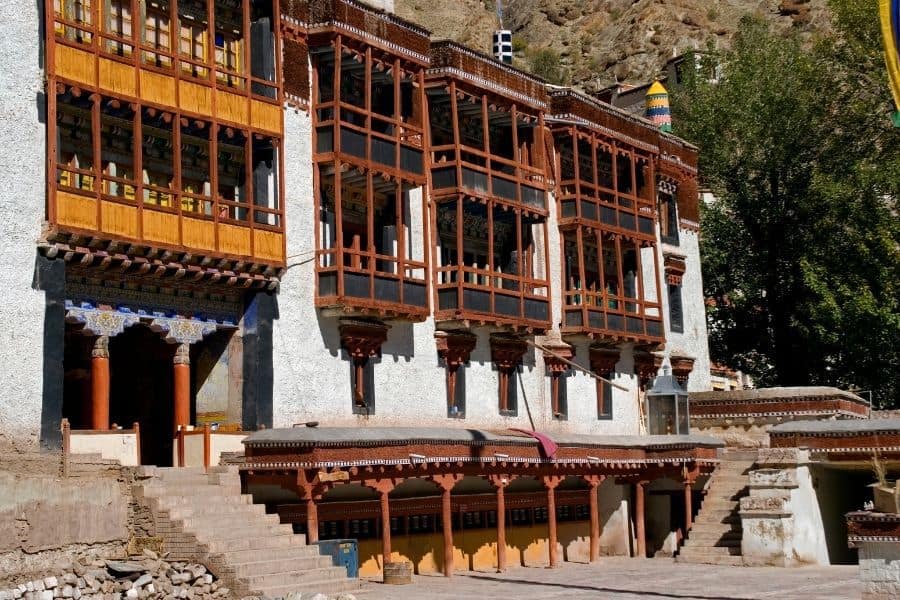
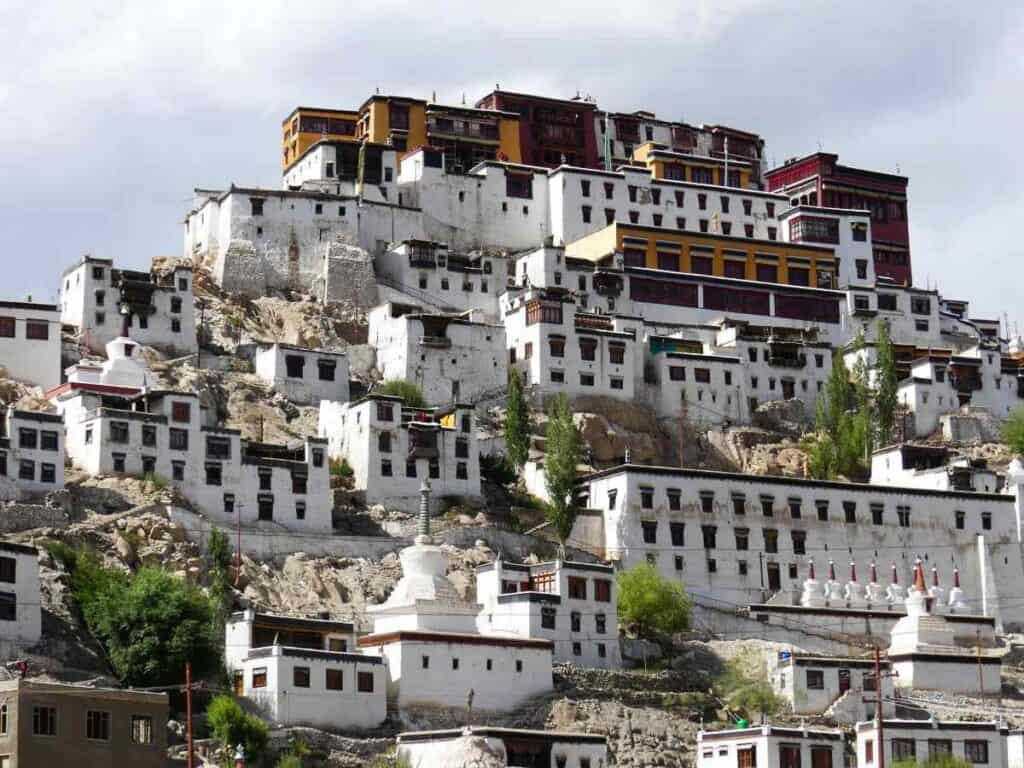
Day 3 (29th June): Leh – Nubra Valley
We drive to Nubra Valley via Khardungla (The highest motorable road in the world, 18,380 ft). We will take short breaks along the road at cafés with stunning views. We visit Diskit monastery and check in to the camp. After lunch, we go on a camel safari (double-humped camels found only in Ladakh and Mongolia) at the Sand Dunes between Diskit and Hundur villages.
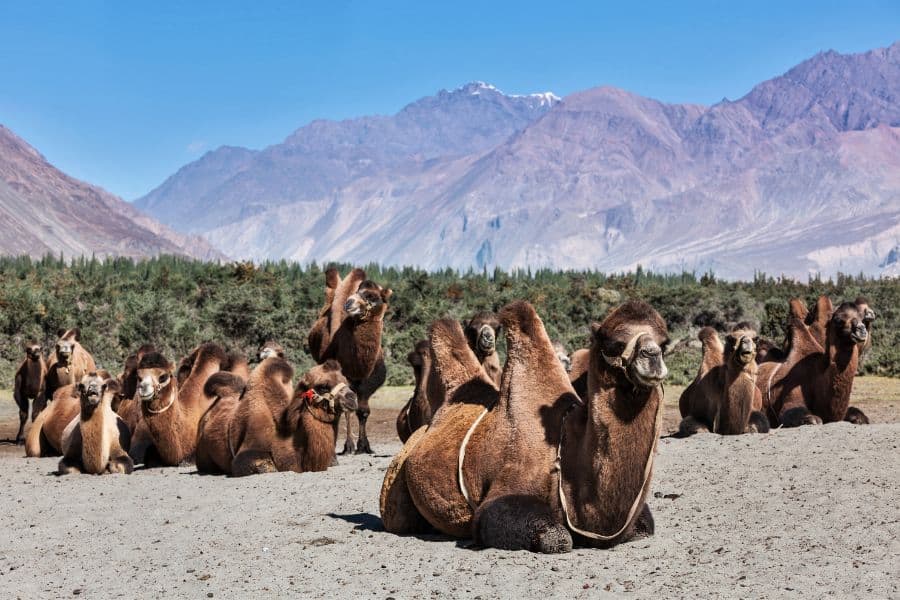
Overnight in Nubra Valley
Leh-Nubra Valley: 128 km
You will get the payment and all other information after having signed up for the tour.
Day 4 (30th June): Nubra – Pangong Lake via Shyok River road
We head to the Samstenling monastery, built in 1840, which is probably the largest in the Nubra and Shyok valleys. On the way, you will drive along green valleys with marmots, yaks, cattle, and sheep munching on the fresh grass. After that, we have a longer drive to Pangong Lake (6 – 7 hours), where our camp is located. Later, free time to enjoy the color-changing lake and the sunset on the banks of the lake.
Overnight at Pangong Lake
Nubra Valley-Pangong Lake: 210 km
Day 5 (1st July): Pangong Lake – Leh
Early in the morning, we enjoy the picturesque view of the sunrise at the lake before driving back to Leh. On the way, we stop at the dramatically located Tangtse Gorge and monastery, which belongs to the Drigung-Kagyupa sect. After that, we continue to Leh through Changla Pass, 17 350 ft (~5 290 meters), one of the highest motorable roads in Ladakh.
Overnight in Leh.
Pangong Lake- Leh: 160 km
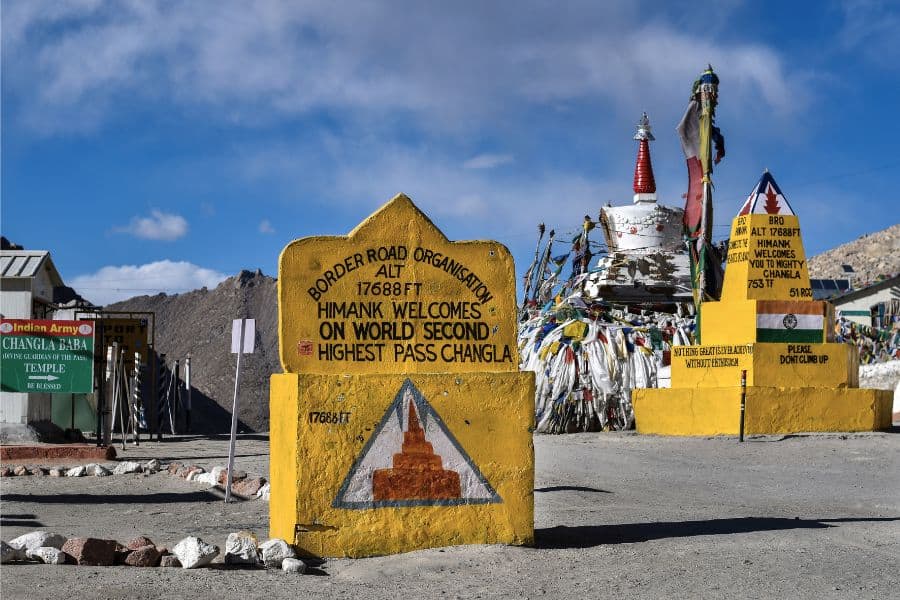
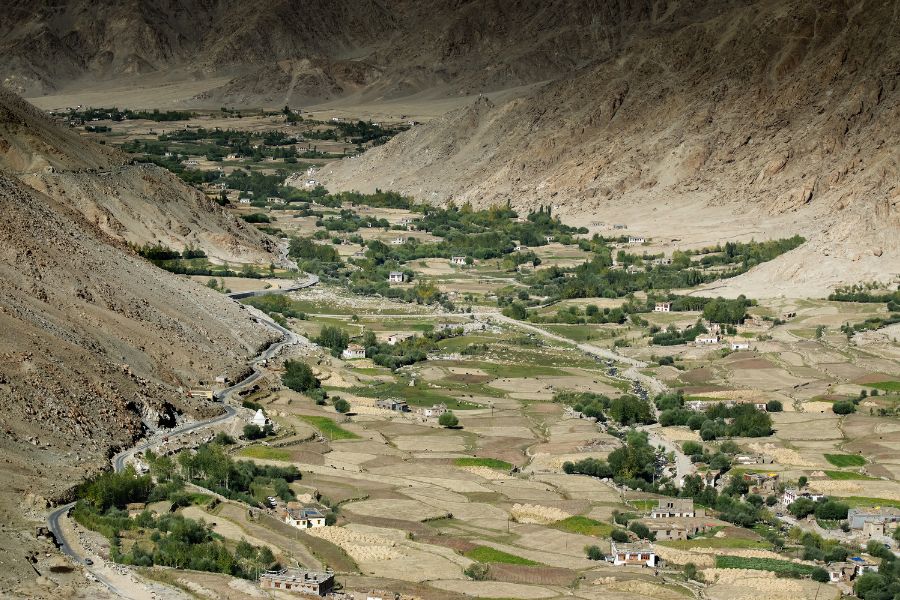
Day 6 (2nd July): Alchi, Rizong, and some hiking
On this day, we leave Leh and continue on the highway to the north along the Ladakh mountain range.
We stop for a photo at the confluence of the Zanskar and Indus rivers, which looks stunning from the main road, and visit the Magnetic Hill, where the layout of the area and surrounding slopes create the optical illusion of a mountain.
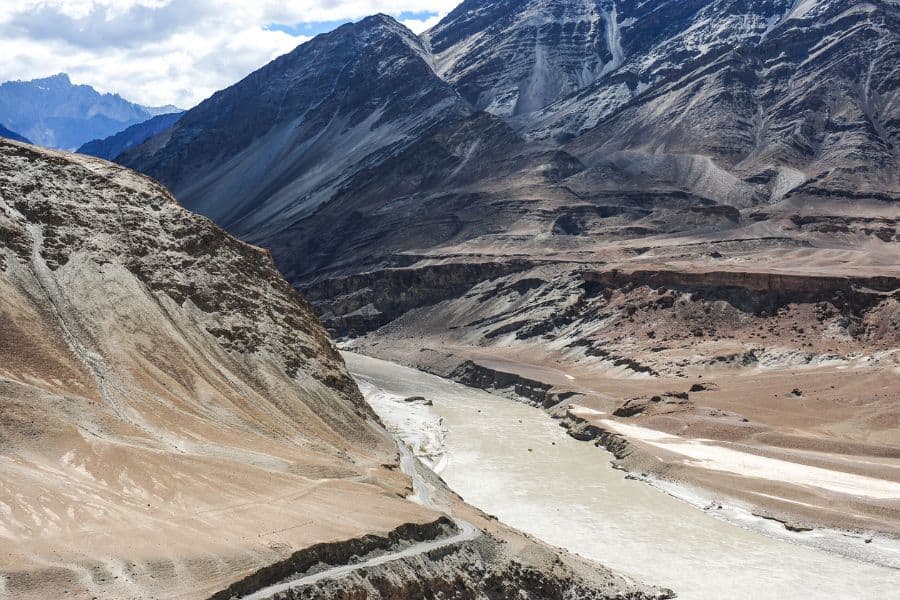
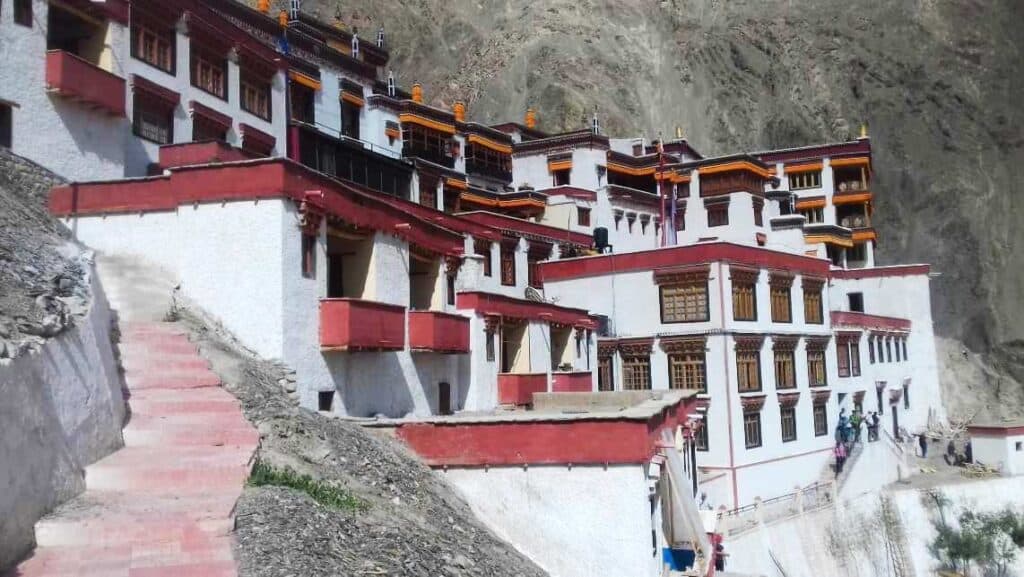
We visit Alchi Gompa, one of the oldest monasteries from the 11th century, and hike from Ule to Rizong, the most isolated monastery in Ladakh.
The hike is along the road (5km, takes 1-2 hours) in beautiful surroundings, with almost no traffic, so you can perfectly enjoy the landscape.
Overnight in Uley Tokpo resort!
Leh-Alchi: 66 km
Alchi- Rizong: 10 km
Day 7 (3rd July): Sham Valley – Lamayuru – Zangla
We visit the oldest monastery of Ladakh, Lamayuru, and drive by the so-called “Moonland”.
After visiting Lamayuru, one of the most famous monasteries of Ladakh, we cross two passes, the Singe La (16 590 ft~5 056 meters) and Sirsir La (15 761 ft~4 804 meters), and arrive by evening in Zangla, which is part of the Zanskar region. Zanskar is one of the most unknown and isolated areas in the country, and it feels like being in the middle of nowhere, alone, among the majestic mountains. You will notice that much fewer tourists come to this part of Ladakh.
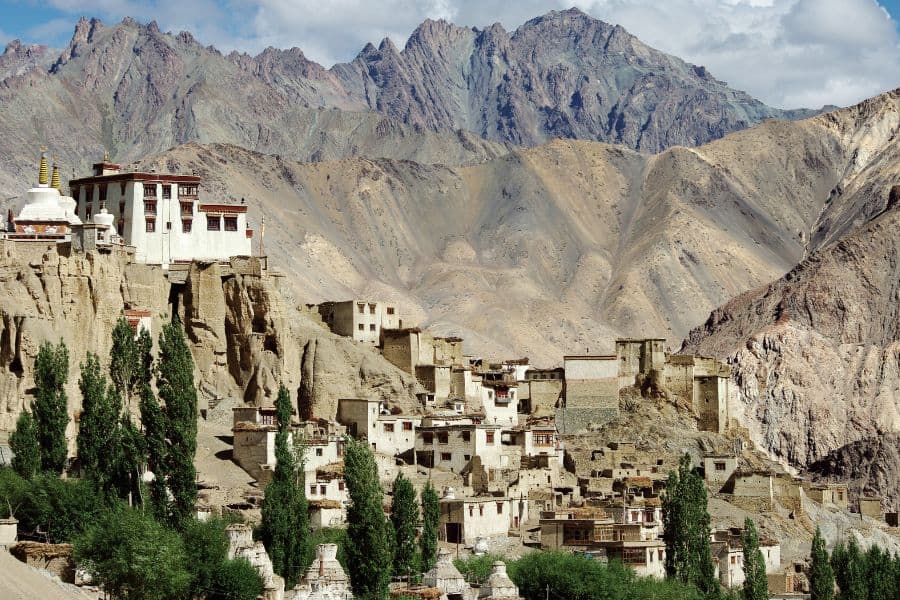
Overnight in Zangla
Rizong-Lamayuru-Zangla: 152 km
You will get the payment and all other information after having signed up for the tour.
Day 8 (4th July): Zangla to Padum, Karsha Gustor festival
We first visit the Zangla Palace, the former royal palace. The ruins of Zangla castle sit on a hill overlooking the town, and an old nunnery still functions nearby. We head to Stongdey, the second-largest monastery in Zanskar, housing around sixty monks, and also visit the Karsha Gompa, the largest and most important monastery in Zanskar. Today, about 150 monks live within its walls. The upper floor of the Gompa offers stunning views of the Stod River and the plains around Padum. The monastery is under the supervision of the Dalai Lama’s younger brother. We will participate in the Karsha Gustor festival, which is a unique opportunity to see the famous mask dances of Ladakh!
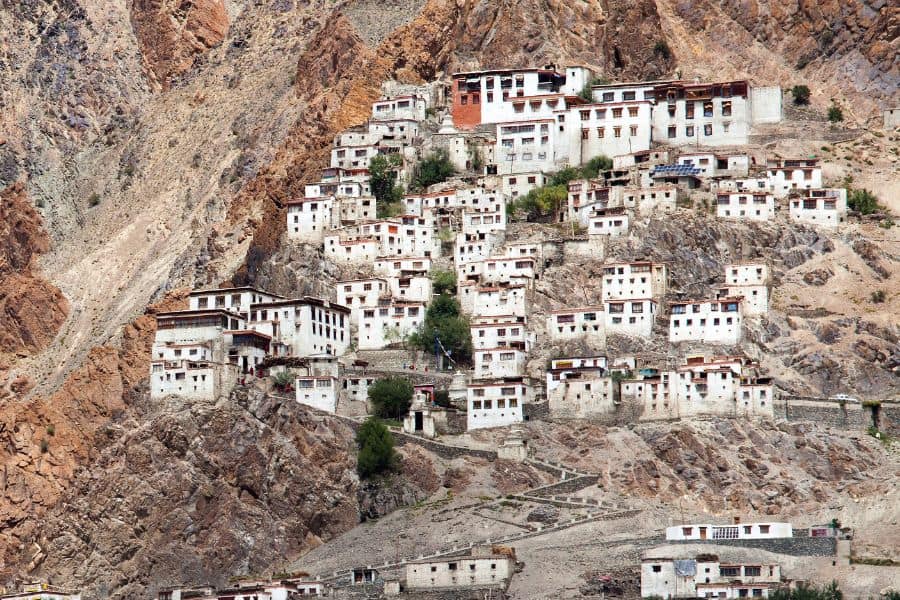
Overnight in Padum
For more inspiration, listen to the Amateur Traveler’s podcast’s episode about Ladakh, where I was a guest.
Day 9 (5th July): Day trip to Phuktal
Early in the morning, we drive to Purne and walk to Phuktal, which takes 3 hours to get there. It is not so difficult, but it takes time. Hiking is the best way to experience the beauty of this region and get deeper into nature, farther from the settlements.
Overnight in Padum
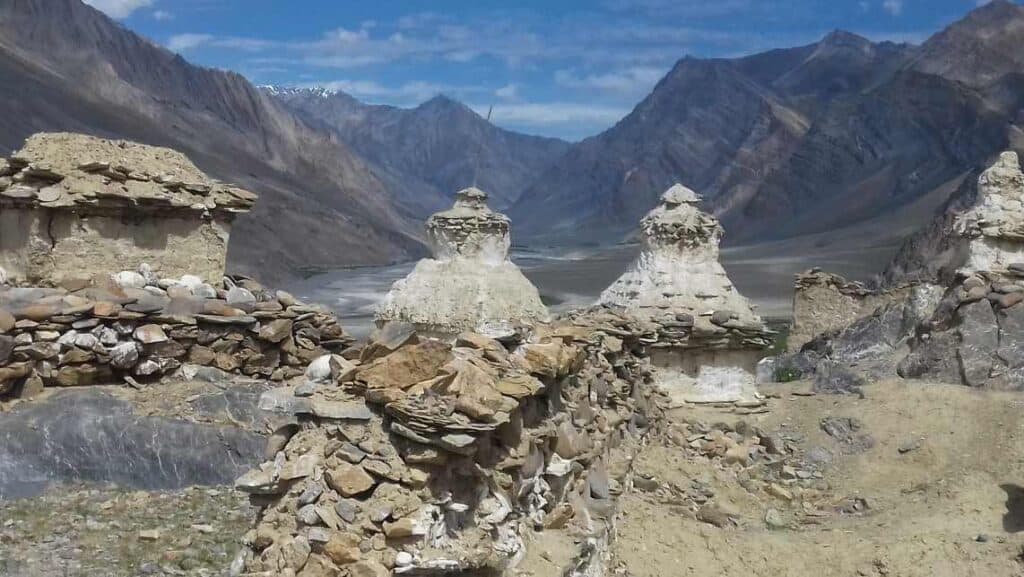
Day 10 (6th July): Padum – Rangdum
After departing from Padum we visit the Sani Gompa of the Drugpa Kagyü line. The landscape keeps on surprising you with its incredible scenery. You spot the yaks grazing and marmots running around, and you may see the life of nomad people.
Then we cross the Pensi-La Pass (4400 m) and take a photo of the Drang Drung Glacier and the surrounding 6000-meter-high mountains.
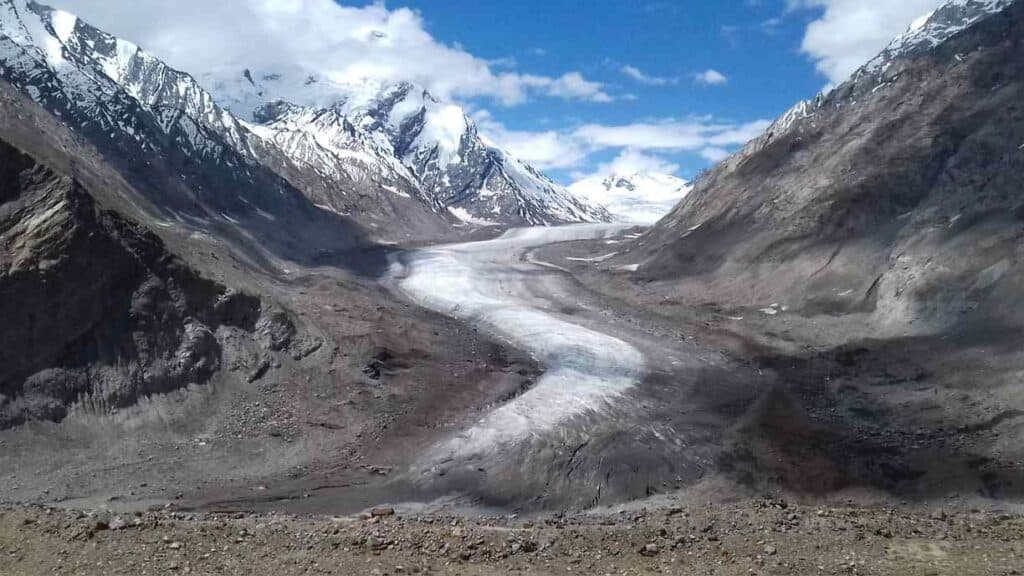
Rangdum is a lovely 200-year-old monastery halfway to Kargil. It stands on an outcrop surrounded by stony river plains. Approximately 40 monks follow the Gelug lineage of Buddhism in Rangdum. It is already part of the Suru Valley, but culturally, it is still closer to Zanskar. Road conditions are bad around Rangdum, and there is no electricity, telephone, or internet, which makes it a perfect place to enjoy being far from civilization. On the way there, we will stop for short walks for refreshments and a lunch break in nature.
Overnight in Rangdum
Padum-Rangdum: 104 km
Day 11 (7th July): Rangdum – Kargil
There is a long journey ahead of us, so we leave for Kargil early morning. On the way, we visit Karsekar village to see the giant rock-carved Buddha (960 AD). We also get close to the Himalayas with two iconic peaks, the Nun (7135 m) and Kun (7077 m), which are covered by massive glaciers, and pass by secluded Muslim villages.
Overnight in Kargil
Rangdum- Kargil: 230km
Day 12 (8th July): Kargil – Srinagar
We drive to Srinagar with a stop in the Drass village, strangely the second coldest inhabited place on earth (the temperature dropped once to -45 °!). The main attraction of Drass is the military museum with an eternal flame and memorial stones that honor all the Indian soldiers who lost their lives during the Kargil War in 1999. We arrive in Kashmir by crossing the 3 800 meter-high Zoji La Pass. There is no asphalt, the roads are narrow, and the serpentines are very sharp. Huge trucks and cars try to navigate between the ravine and the cliffs with outcrops on the other side. There are hair-raising moments, so you will probably feel relieved once you get through. But don’t worry, local drivers navigate exceptionally well in the mountains.
We have a short stop in the famous mountain resort, Sonmarg, which means “Golden Field,” that feels like being in Switzerland. Some Victorian buildings stand as reminders of the British past.
Overnight on a houseboat in Srinagar.
You will get the payment and all other information after having signed up for the tour.
For more inspiration, listen to the Amateur Traveler’s podcast’s episode about Ladakh, where I was a guest.
Day 13 (9th July): Srinagar
We start the day by climbing up to the Shankaracharya Hindu temple, from where there is an excellent view of Srinagar.
After that, our day will continue as follows:
– Stroll around in the stunning Mughal gardens, the Nishat Bagh and Shalimar Bagh Garden along the Dal Lake.
– Visit the oldest quarter of Srinagar, which has wooden houses along the Jhelum river.
– Have an evening boat ride on Dal Lake. The Kashmiri boat, called shikhara, has parasols and comfortable cushions. Part of Srinagar’s life concentrates on the Dal Lake. Locals cultivate flowers and vegetables in floating and lotus gardens, and handicraft shops also stand on poles.
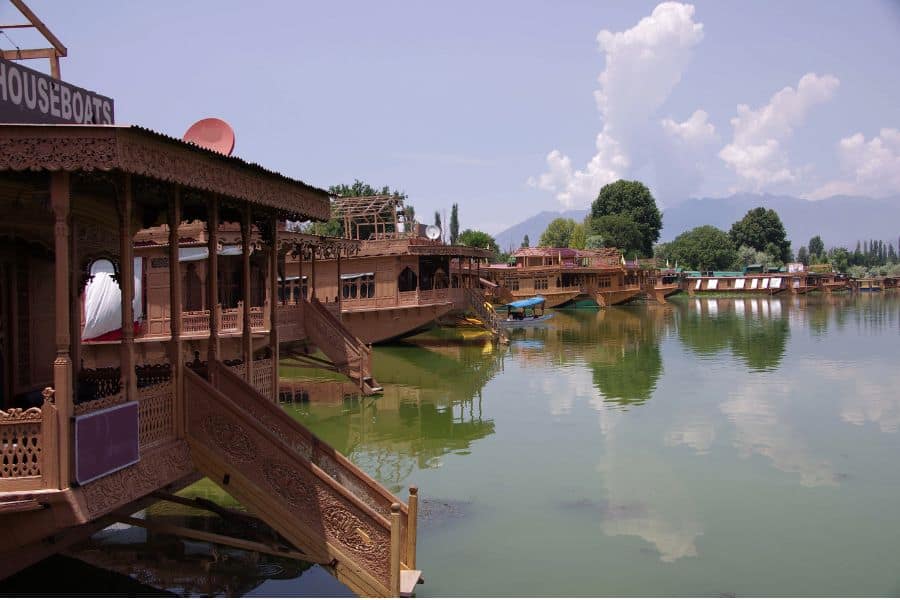
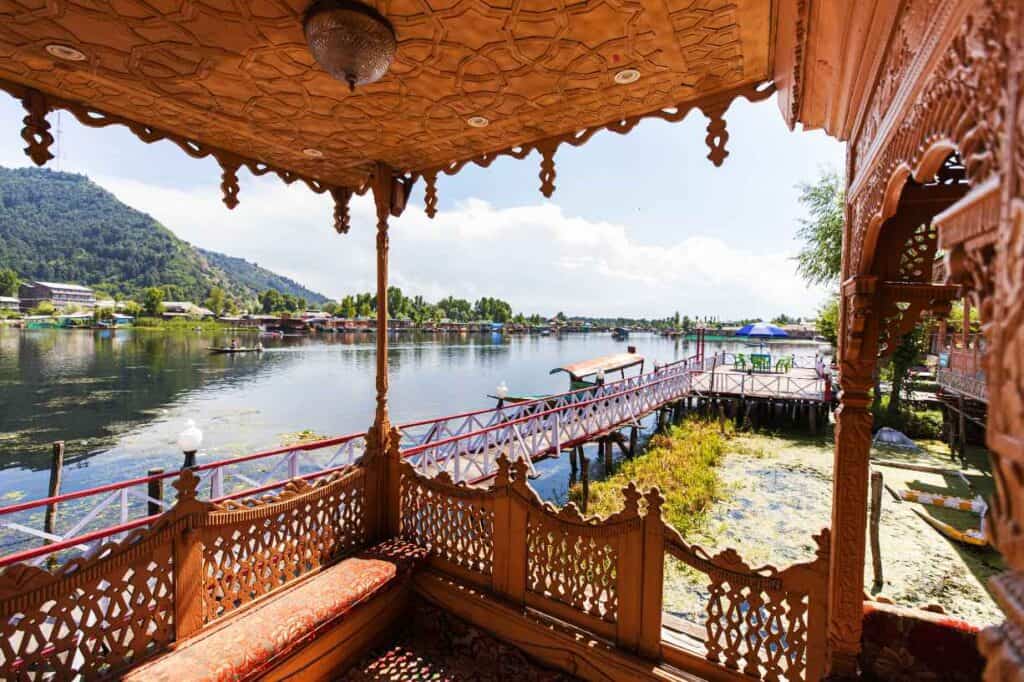
Day 14: Flight to Delhi or another destination
Transfer to Srinagar airport to take a flight to Delhi in the morning. Upon arrival we visit the Qutub Complex, a World Heritage Site, home to the world’s tallest brick minaret (72.5m) and the iconic 1,600-year-old Delhi Iron Pillar. Then we learn about the history of the world’s youngest religion, the Baha’i, at the Lotus Temple. We visit a less touristic, but actually the most amazing modern sight of Delhi, the Akshardham temple.
We finish our tour with a farewell dinner.
At night you take your flight back home or if you plan to stay in India, we are ready to help you with the program.
For more inspiration, listen to the Amateur Traveler’s podcast’s episode about Ladakh, where I was a guest.
You will get the payment and all other information after having signed up for the tour.
What’s Included in the price?
- Airport transfer from Leh International Airport upon arrival and to Srinagar airport for departure
- 13 nights of accommodation (twin shared) in hotels mentioned below or similar
- Transportation in Tempo Traveller car and driver around Ladakh
- Breakfast and dinner, packed lunch where there is no other option along the road
- English-speaking knowledgeable guide who grew up in Ladakh
- Entrance fees to all sites listed in the itinerary
- Inner line permit / Environmental permit, Ladakh Entry Fees, Wild Life Fees and Red Cross society fee
- Oxygen Cylinder during the visit to Nubra, Pangong Lake
- Packed cold lunch on days when no restaurants are available
What is not included in the price?
- International flights
- Domestic flights Delhi-Leh and Srinagar-Delhi (100-200 USD depending on the date of booking, we will arrange this for you)
- Visa fees
- Having your own private room costs €350
- Tips for drivers and local guides
- Single supplement (if you want to stay alone in the room) is 350 USD
You will get the payment and all other information after having signed up for the tour.
Important things to know about Ladakh
– Acclimatization is essential on the first day. Have rest, drink enough, or take shorter walks and visits as you feel. Headache and vomiting are the main symptoms of high-altitude sickness. Drinking a lot of water helps you adapt to the new conditions. In the beginning, try to move slowly and do not rush.
– Change money in the big cities (Leh, Kargil) and have enough cash with you because there is no ATM or bank in the Zanskar Valley or outside the big cities.
– Never take hot water for granted. Many times, it is limited to a couple of hours in the morning and evening. In smaller or remote places, they may not have it at all.
– Outside big cities, there will be packed lunch, as there is no proper restaurant farther from Leh.
– Wifi is available in Leh and Kargil. However, the well-known Indian Airtel and Aircel internet services are not working in Jammu and Kashmir. The one working, called BSNL, is available in Leh, but you have to go to an office at the bus station accompanied by a local person and show your passport. Due to the limited telecommunication services, you better inform your family and arrange everything ahead, as you probably do not have an internet connection till Kargil.
– The villages of Ladakh are located at an altitude of a minimum of 3100 m. Climbing the stairs to the monasteries can be tiring,
– There are long journeys to cover in Ladakh and Kashmir. Therefore, we stop at least every 3-4 hours for a short walk or do some exercises to avoid any health issues.
– As soon as you leave the principal route, the roads get bumpy, which is not really comfortable.
– The Kashmir valley has been a sensitive, disputed territory between India and Pakistan for 70 years. For that, there is an increased military presence everywhere. Security controls are frequent where you have to present your passport and fill in a form.
For more inspiration, listen to the Amateur Traveler’s podcast’s episode about Ladakh, where I was a guest.
Where do we sleep?
Leh : Hotel Sia Residency or similar
Nubra: Hunder Resort or similar.
Pangong: Gongma Residency or similar.
Sham: Ule delight camp or similar.
Zangla: Homestay
Padum: Potala hotel or similar.
Rangdhum: Homestay
Kargil: Zojila Residency or similar.
Srinagar: Deluxe houseboat
Is Kashmir safe?
The Kashmir valley with Srinagar is on the bucket list of many travelers and is considered safe by now. But the security of the valley can be unstable. When India and Pakistan gained independence in 1947, Kashmir was split between the two countries, but both claimed the whole territory for themselves. They waged three wars and two military conflicts for the region that still qualifies as a disputed area.
Until 1989, Kashmir was one of the top destinations in India, and tourism was a crucial pillar of the local economy. The picturesque green valley was the most popular venue for Bollywood film shootings. However, after the Islamic terror acts, the cinemas were closed, and it became unsafe for tourists. Hundreds of thousands of Indian soldiers are stationed in J&K state, making it the highest existing military presence. During the last ten years, tourism in Kashmir saw significant growth, although Indian tourists still outnumber foreigners. Kashmir is a popular honeymoon destination for young Indian couples.
Pakistan controls 37% of the Kashmir region (85,000 km²), made up of Gilgit-Baltistan and Azad Kashmir. India possesses 43% (110,000 km²), including Kashmir valley, Ladakh, and Jammu, and China also has a share of 20 % (37 000 km²), the Aksai Chin region. Since 5th August 2019, Jammu & Kashmir state was replaced by two separate entities, the Union Territory of Jammu and Kashmir and the Union Territory of Ladakh, controlled by the central government.
Now, Kashmir is an exotic and generally safe destination for travelers. But it is always important to get up-to-date information about the current situation. Border clashes are common, but they only occasionally spread to other parts of the valley of India. In this case, buses, trains, and flights are suspended, and schools are shut down.
Weather in Ladakh and Kashmir
Since Ladakh is surrounded by mountains and covered by snow most of the year, May-September is basically the period when passes are open and the weather is pleasant. Most of Ladakh is located above 3500 meters, meaning mornings and evenings can be cold, even during the day if there is no sunshine. However, on a sunny day, it might also feel quite hot at this altitude.
Kashmir is pleasant or even hot at this time of the year, with temperatures rising to 30-31 °C and high humidity. Monsoon usually starts in July, when lighter or heavier rainfalls are expected.
Summer months are the best time to make a combined Ladakh-Kashmir trip.
You will get the payment and all other information after having signed up for the tour.
Travel Insurance
Having medical insurance is a precondition for taking part in the tour. Even if you travel alone, don’t save money on that!
Safetywing and IATI are two popular choices of frequent international travelers that you can use regardless of your nationality. I personally use Safetywing for my travels.
Individual trip to Ladakh-Kashmir
If you cannot join the group or you want to have a tailor-made program for your family and friends, contact me to organize the trip for you. The above itinerary can be an example.

